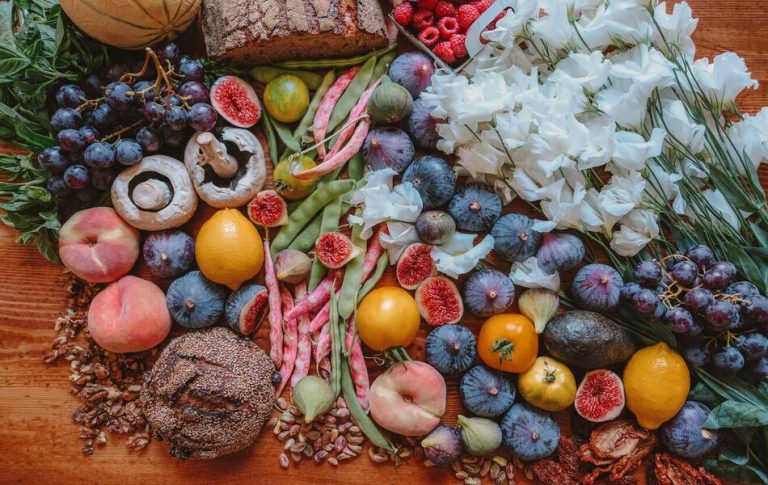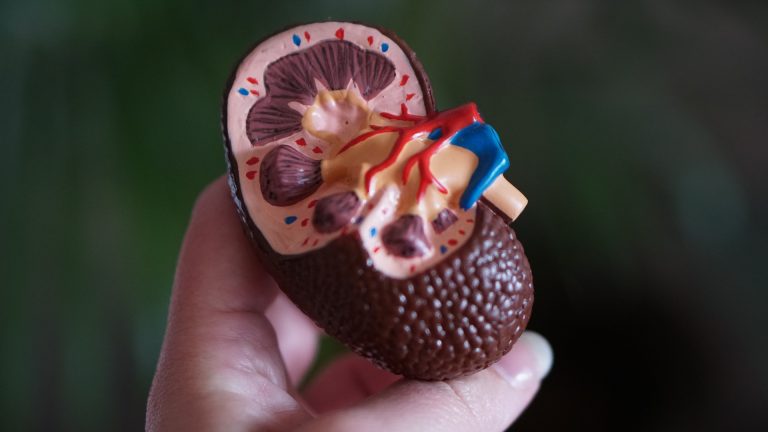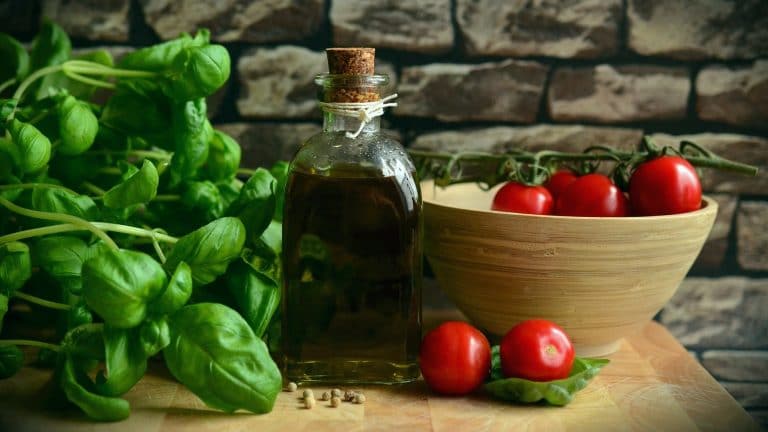What Is the Autoimmune Protocol (AIP) Diet & Does It Work?

Based on the autoimmune protocol, the AIP diet is a type of paleo diet designed to help reduce inflammation in the body and relieve the symptoms of some autoimmune diseases. The paleo diet itself is also called the “caveman diet” and is associated with following the daily menu that our ancestors consumed in ancient times.
In short, the diet is about eating precisely the same things that cavemen ate, according to scientists. But what can you eat if you follow this diet, and is there scientific evidence supporting its benefits?
What Is the Autoimmune Paleo Diet?
There’s increasing evidence that the foods consumed regularly during the Paleolithic Age may be healthier than today’s diet. Professor Loren Cordain developed the paleo autoimmune diet, and the diet itself is based on the presumed diet from the Paleolithic period, or Old Stone Age—a historical period that runs from the date of human appearance to 10,000 BCE.
Although the first associations with this diet are related to large amounts of meat consumption, this doesn’t mean you should eat raw meat and only carrots. Still, the autoimmune paleo diet recipes exclude certain foods such as sugars, which can undoubtedly be helpful for the body. But what are the risks?
The role of the paleo diet in autoimmune diseases is increasingly being commented on. It’s thought that the autoimmune protocol diet is optimal for the prevention and treatment of certain chronic diseases.
The idea behind the diet is this: obesity (with all the accompanying conditions), diabetes, and heart disease are all health concerns brought on by modern society, caused by the excessive intake of calories, salt, sugar, etc. Since this diet excludes the mentioned products and allows us to eat only unprocessed foods, it helps the body stay healthy.
Fundamental changes to the original, historical AIP paleo diet began at the onset of the Neolithic Age. Moreover, together with the Industrial Revolution, these changes became too rapid—taking the evolutionary timeline into account. Thus, the human genome could only be slightly adapted to them.
In modern western populations, at least 70% of daily energy intake is provided by foods rarely or never consumed by Paleolithic hunter-gatherers. With that in mind, this autoimmune protocol diet food list excludes:
- cereals
- dairy products
- refined sugars
- processed foods
This diet list would include only fresh meat, fish, fruits, and vegetables. Besides, Paleolithic nutrition contains more proteins and long-chain polyunsaturated fatty acids. Today, observational studies on populations that have not yet acquired the Western lifestyle demonstrate that a Paleolithic-type diet is associated with:
- reduced risk of cardiovascular diseases
- metabolic syndrome
- type 2 diabetes
- cancer
- acne vulgaris
- myopia
Furthermore, an AIP diet plan is associated with a notable reduction in specific risk factors such as:
- weight
- blood pressure
- waist circumference
- glucose tolerance
- insulin resistance
In addition, it’s been demonstrated that some blood tests (such as C-reactive protein, glycated hemoglobin, glucose levels, insulin secretion, and lipid profile) showed some levels of improvement.
What Is the AIP Diet, and Is It Healthy?
Over the last 200 years, from the early Industrial Revolution to today, food has changed significantly, and a considerable amount of artificial additives has been incorporated into our food. This was driven by supply and demand as it became more financially advantageous for manufacturers and more delicious for users. However, all these changes can significantly damage the health of humanity and should be avoided.
A popular autoimmune diet book devoted to the paleo diet reviews the claims that the human genome is best adapted to the diet of our ancestors before the agricultural revolution. Many foods are banned in the AIP diet meal plan—this means avoiding sugar, smoked meat, salt, cereals, grains (bread, corn, wheat, rice, pasta, etc.), legumes, dairy, yeast, coffee, and alcohol. Potatoes, soybeans, and corn are explicitly banned because they’re now genetically modified and processed.
Although grains and processed carbohydrates are eliminated in this diet, it’s less restrictive than similar diets, such as the Keto diet. In fact, the autoimmune disease diet recommends primarily fruits and vegetables, allowed in unlimited quantities. Meat (including seafood) and vegetables are probably the essential components of the paleo diet.
Also, autoimmune protocol diet recipes involve fruits, nuts, and seeds (all except peanuts). Honey and dried fruits are only allowed in small quantities. Only certain oils are permitted from the autoimmune paleo diet list: olive oil, flaxseed oil, and grapeseed oil. Fish oil capsules are a recommended supplement. In addition, the autoimmune protocol diet allows drinks like tea, water, and freshly squeezed unsweetened juices in small quantities.
It’s advisable to eat only quality foods and eliminate anything that’s processed or packaged. One good sign is that we’re looking at food labels more thoughtfully. However, what’s the point when we find it difficult to even find foods without added preservatives, colors, and flavors? In line with this, the trend toward healthy and “natural” nutrition is entirely understandable.
Why Try a Paleo Diet for an Autoimmune Disease?
The AIP option is a stricter version of the paleo diet, which is based mainly on:
- meat
- fish
- vegetables
- nuts
- seeds
In addition to this, the AIP recommends eliminating foods that can cause inflammation in the gut and eating foods rich in nutrients instead. Thus, many consider it to be the best diet for autoimmune disease management.
The AIP is based on the so-called “leaky gut” hypothesis or “leaky gut syndrome.” The autoimmune protocol (AIP) diet claims to control the autoimmune response, reduce the symptoms of autoimmune diseases, and prevent the emergence of new ones.
People who follow an AIP diet for beginners should adhere to it for a few weeks and then slowly add the foods they’ve avoided back in. The principle behind this is to see if there is a reaction when you reintroduce certain foods. If there’s a reaction, it’s best to exclude this food from your diet for the long term.
What Can You Eat on the Autoimmune Diet?
- meat and fish, preferably free-range
- vegetables (excluding tomatoes, eggplants, peppers, and potatoes)
- sweet potatoes
- fruits (in small quantities)
- coconut milk
- avocados, olives, and coconut oil
- dairy-free fermented foods (such as kombucha, kefir prepared with coconut milk, yogurt, and kimchi)
- honey or maple syrup (in small quantities)
- fresh herbs (such as basil, mint, and oregano)
- AIP diet tea, like green tea and herbal tea
- bone broth
- vinegar (apple cider and balsamic)
Even when excluding meat, fish, and dairy products from the menu, it’s still possible to follow the vegan diet for autoimmune diseases. However, it is more challenging to adhere to, especially when grains aren’t available in this diet approach.
Foods to Avoid on an AIP Elimination Diet:
- all cereals (such as oats, rice, and wheat)
- all dairy products
- eggs (in the so-called egg-free AIP)
- legumes (such as beans and peas)
- some vegetables (tomatoes, eggplants, peppers, and potatoes)
- all sugars, including sugar substitutes (but excluding honey)
- oil and ghee
- all fats (except avocado, coconut, and olive oil)
- nutritional supplements, preservatives, colorings
- alcohol
If you have an autoimmune disease, an anti-inflammatory diet could potentially be the best way to alleviate the severity of the disease’s symptoms. However, additional studies are needed to prove the effects. It isn’t necessary to compare the benefits of an anti-inflammatory diet vs. the autoimmune diet because they can work together to achieve positive results.
Additional Small but Essential Details for the Autoimmune Diet Plan
In short, the essence of this diet is that it’s a type of elimination regime in which several large groups of foods are excluded for an extended period (at least three months). Then, in several stages over some time (at least five days), they will be reintroduced one by one again.
The re-inclusion period is probably the longest but also the most critical phase of the Paleo AIP diet. During the reintroduction process, the body’s reactions to each particular food must be monitored. These reactions can be either a gastric symptom or a headache, or any ailment in the body. It would be best to keep a log during the reintroduction phase of this autoimmune disorders diet so that all symptoms can be documented. The described process is very individual.
For this phase of the autoimmune diet, the reintroduction process can be conditionally divided into four AIP reintroduction stages, where different foods can be consumed again one by one. The goal is to determine the foods that cause adverse reactions in your body to exclude them from the menu. It might help to join a support group and read articles or blog posts on the best autoimmune diet. This way, you can know what mistakes are often made and learn how to avoid or fix them.
Don’t forget that trying out different AIP diet recipes can be beneficial when you’re trying to follow the diet. Although this diet is trendy, some of its features are very individual, and what works for one may not work for another. As a note, in addition to food, you will likely need to take supplements, enzymes, or probiotics to help your digestive system.
Does an AIP-Based Diet for Autoimmune Diseases Work?
An AIP-based diet is restrictive and difficult to follow—not everyone can adhere to it. So is this diet for autoimmune diseases worth it? What’s the evidence supporting these autoimmune diets, and do they work? The first thing you could do is take a look at some AIP diet before and after photos of people.
A 2012 study showed that bacterial growth in the gut might be associated with inflammatory and autoimmune diseases. In line with this, supporting the beneficial microbes in our gut by following a suitable diet for an autoimmune disease or following an autoimmune inflammatory diet could eventually help alleviate the inflammation.
Another study in 2014 demonstrated that inflammation affects functions in the bowels so severely that this lowers patients’ quality of life. Moreover, the authors also commented on the link between food allergens and intestinal permeability. Data on the relationship between intestinal permeability and autoimmune diseases were also demonstrated. The study concludes that more autoimmune diet research is needed to confirm gut dysfunction as a risk factor for developing inflammatory diseases and the best lifestyle and diet for autoimmune disease.
A 2017 American study reported that eliminating certain foods as part of an AIP-based diet could improve chronic inflammatory bowel disease symptoms. This study is one of the first clinical trials on the effectiveness of an AIP-based diet for reducing the symptoms of some autoimmune diseases. Due to the small number of participants (15), additional, larger, randomized trials are needed to support claims that an autoimmune elimination diet can influence the severity and symptoms of an autoimmune disease.
It should be remembered and emphasized that autoimmune diseases are complex, and many factors influence their occurrence and course. These include:
- a patient’s genetics
- immune system
- status
- health status
- activity levels
- geographical location
- their microbiome and any harmful elements in their lifestyle or profession
Furthermore, the belief that everyone will benefit from a single dietary regime doesn’t consider the critical individual differences in each person. When it comes to a nutritional approach, there’s no one-size-fits-all method—meaning an autoimmune disorder diet may not be the answer for everyone. For example, special attention has to be paid to the nutrition of the elderly.
It’s also essential to keep another important characteristic of the autoimmune paleo diet meal plan in mind: reduced carbohydrate intake risks producing a deficiency in several macro- and micronutrients. This was demonstrated in a systematic review from April 2019. In line with this, it isn’t possible to follow this diet for life.
More research is needed to say whether this autoimmune diet, based on the AIP, can improve the symptoms of autoimmune diseases. This diet is healthy but not well-balanced. And keep in mind, it can’t exclude the need for medication in some patients. You should also consult your doctor or specialist before starting and following the diet.
AIP Diet During the Pandemic
It is critical to eat healthily at all times, but especially during the COVID-19 pandemic. It’s vital that you recognize the dangers of malnutrition, which can raise your chances of developing severe COVID-19 and its consequences.
While staying at home, it’s critical to figure out which foods and beverages aggravate your autoimmune disease symptoms, as the meals and drinks we consume impact our bodies’ ability to prevent, fight, and recover from illnesses.
Although there are no foods that may prevent or cure this virus, a healthy diet is critical for maintaining the immune system and lowering the risk of developing:
- heart disease
- diabetes
- obesity
- cancer
Maintain excellent hygiene when handling foods from your autoimmune diet list during these difficult times. Here are a few pointers on how to go about it:
- Keep the meal as clean as possible.
- Keep it at a temperature that isn’t too hot or too cold.
- Cook thoroughly.
- Separate the raw and cooked ingredients.
- Safe water and raw materials should be used.
Conclusion
If you want to eat cleaner and develop healthier habits, the AIP diet could be an excellent way to achieve this. Although more controlled, randomized, and large-scale studies are needed, some small studies have found benefits for patients with autoimmune diseases. Even though the diet is famous for controlling autoimmune symptoms, remember that you can also benefit from losing weight and becoming more active.
FAQs
What can you eat on the AIP diet?
The AIP diet list of of foods you can eat includes:
- sweet potatoes
- coconut milk
- meat, especially grass-fed, and fish
- bone broth
- fruit in small amounts
- coconut, avocado, and olive oil
- grass-fed gelatin and arrowroot starch
- vinegar
- green tea and non-seed herbal teas
- fresh non-seed herbs, like mint, basil, or oregano
- vegetables, except nightshade vegetables
- dairy-free fermented foods, like sauerkraut, kimchi, kombucha, and kefir made with coconut milk
- maple or honey syrup in small amounts
How long should you do the AIP diet?
The elimination phase length varies since it typically lasts until an individual starts feeling a noticeable symptom reduction. However, most people keep this phase from 30 to 90 days on average, even though some feel improvements even within the first three weeks.
Are bananas allowed on the AIP diet?
It is safe to say—yes, they are. And many other fruits on the autoimmune diet food list include:
- apples
- blackberries
- blueberries
- cherries
- coconut
- figs
- grapefruit
- grapes
- melon
- kiwi
- lemon
- lime
- mandarins
- mango
- nectarines
- oranges
- olives
- papaya
- peaches
- pears
- plums
- raspberries
- strawberries
- tangerines
- watermelon
Are eggs bad for autoimmune diseases?
Yes, they are. Namely, during the elimination phase of the AIP diet, grains, seeds, eggs, dairy, legumes, nuts, and nightshade vegetables are entirely avoided, so they should be on your autoimmune diet shopping list. Moreover, what should also be avoided is alcohol, coffee, oils, food additives, specific medications (non-steroidal anti-inflammatory drugs), and tobacco.
Is there an AIP diet for Hashimoto’s thyroiditis?
The paleo diet has become the “remedy” for any manifestation of autoimmunity, but it may not be the answer for everyone. Many people diagnosed with Hashimoto’s are aware of the advantages of an AIP-based diet. Indeed, the autoimmune thyroiditis diet can help alleviate some of the unpleasant signs of autoimmune thyroiditis, such as:
- fatigue
- brain fog
- joint pain
- gas
- bloating
However, when considering the autoimmune disease diet for thyroid, patients should never forget that they have to follow their doctor’s advice and therapy. And some patients won’t see significant improvement on the paleo diet.
What can I eat as AIP diet snacks?
Some easy AIP snack ideas include: black, green, or Kalamata olives; coconut butter and coconut flakes; protein bars; plantain, sweet potato, or cassava chips; kombucha; prosciutto and porkitos (baked prosciutto chips); sardines or smoked salmon; avocado; and veggies, like carrots, celery, broccoli, cauliflower, cucumbers, and radishes.
You can always use small servings of leftover food and broth. Dried and fresh fruits are the most natural thing if you haven’t anything else that’s AIP-suitable. There are also plenty of autoimmune diet recipes for snacks that can be included in your daily routine.
What’s the process of reintroducing the foods from the AIP diet food list?
After the diet’s first phase, if properly followed, you should begin to see improvement. After this, it’s time to think about some of the restricted foods again. Reintroduction should be slow and systematic to reduce the risk of reactions. Through this process, you’ll learn which foods you’re sensitive to.
What is the best AIP diet breakfast?
It isn’t a good idea to skip breakfast because this will lead to too-low blood sugar and subsequent unpleasant symptoms. At the same time, the specialists don’t recommend eating AIP pancakes or AIP waffles for the autoimmune diet breakfast. They can be used as a reward on weekends and special occasions.
The best foods for an autoimmune diet breakfast that follow the AIP diet are proteins, lots of vegetables, and healthy fats. Adding a warm cup of bone broth to your breakfast is always a good idea. This could be especially helpful if you wish to replace a morning routine that includes drinking coffee. There are also breakfast shakes that can be prepared from vegetables, with or without additional protein in them.






